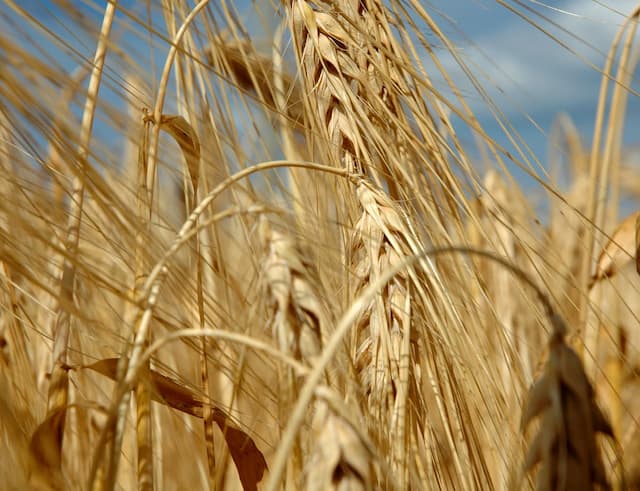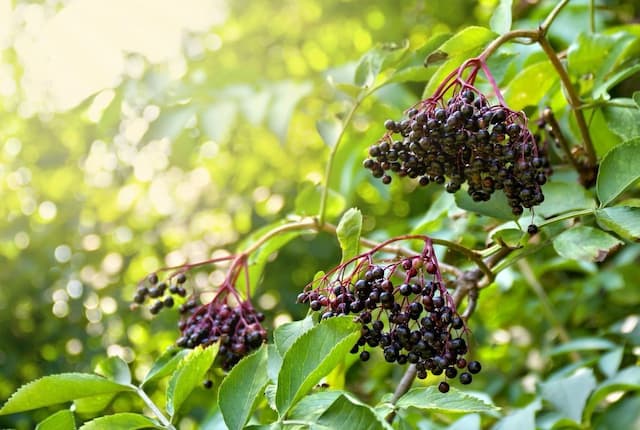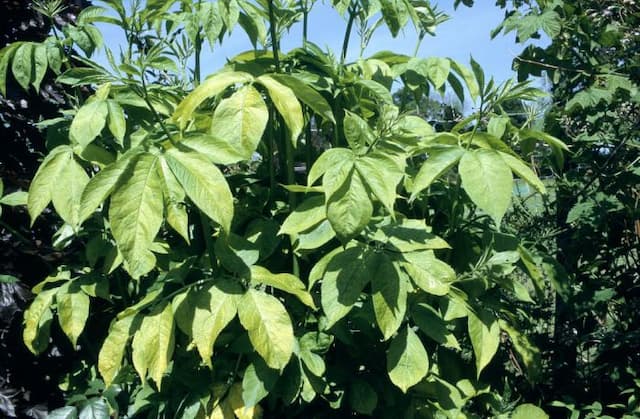Cutleaf Elderberry Sambucus racemosa 'Tenuifolia'

ABOUT
The plant in question, commonly known as the cutleaf elderberry, boasts a distinctive and ornamental appearance. It is characterized by its finely dissected leaves, presenting a lacy texture that is visually delicate and intricate. The foliage typically has a lush green color, which adds a fresh and lively aesthetic to the plant's presentation. In spring, the cutleaf elderberry produces clusters of small, creamy-white flowers that emerge in showy, rounded clusters. These fragrant blossoms are not only appealing to the eye but also attract a variety of pollinators. Following the flowering period, the plant develops bright red berries, which stand out against the green foliage and provide visual interest as well as food for birds and wildlife. The overall habit of the cutleaf elderberry is elegantly arching, giving it a graceful silhouette that can add a soft, textured look to gardens and landscapes.
About this plant
 Names
NamesFamily
Adoxaceae.
Synonyms
Cutleaf Elderberry, Lacy Elderberry, Fernleaf Elderberry, Cutleaf Red Elderberry, Threadleaf Elderberry.
Common names
Sambucus racemosa var. sieboldiana, Sambucus sieboldiana.
 Toxicity
ToxicityTo humans
The common name of Sambucus racemosa 'Tenuifolia' is red elderberry. All parts of the red elderberry plant, especially the leaves, seeds, and stems, are toxic to humans if consumed raw. The plant contains cyanogenic glycosides which can release cyanide when digested. Symptoms of red elderberry poisoning may include nausea, vomiting, diarrhea, dizziness, headache, abdominal cramps, and weakness. In severe cases, ingestion can lead to more serious symptoms such as respiratory failure, seizures, and even death due to cyanide toxicity. Cooking the berries can destroy the glycosides and reduce the risk of poisoning.
To pets
Red elderberry is also toxic to pets, including dogs and cats. Similar to its effects on humans, the cyanogenic glycosides present in the plant can lead to cyanide poisoning in pets if they consume any part of the plant. Symptoms of poisoning in pets may include vomiting, diarrhea, abdominal pain, rapid breathing, dilated pupils, and weakness. As with humans, severe cases can cause more serious symptoms such as seizures, respiratory failure, and can be fatal if not treated promptly. Pet owners should prevent their animals from ingesting any parts of the red elderberry plant.
 Characteristics
CharacteristicsLife cycle
Perennials
Foliage type
Deciduous
Color of leaves
Green
Flower color
White
Height
6-12 feet (1.8-3.7 meters)
Spread
6-12 feet (1.8-3.7 meters)
Plant type
Shrub
Hardiness zones
3-7
Native area
North America
Benefits
 General Benefits
General Benefits- Aesthetic Appeal: Adds visual interest with its finely dissected foliage and lacy appearance.
- Landscape Versatility: Can be used in mixed borders, as a specimen plant, or in naturalized areas.
- Wildlife Attraction: Provides food for birds with its berries.
- Sun Tolerance: Thrives in full sun conditions, making it suitable for sunny gardens.
- Cold Hardy: Can tolerate cold temperatures, making it a good choice for northern climates.
- Spring Flowers: Produces clusters of white to light pink flowers in the spring.
- Fall Interest: Offers autumn color as leaves may turn to a burgundy or red hue.
- Easy Pruning: Responds well to pruning and can be shaped to fit garden design needs.
 Medical Properties
Medical Properties- Immune System Support: Extracts from the elderberry component of Sambucus racemosa, commonly known as red elderberry, may support immune system function.
- Anti-inflammatory Effects: Some studies suggest anti-inflammatory properties that could help reduce swelling and pain.
- Antioxidant Properties: The berries and flowers of the plant contain antioxidants which may protect cells from oxidative stress.
- Antiviral Activities: Components found in red elderberry have been studied for potential antiviral effects against certain types of viruses.
 Air-purifying Qualities
Air-purifying QualitiesThis plant is not specifically known for air purifying qualities.
 Other Uses
Other Uses- Sambucus racemosa 'Tenuifolia' can be used for privacy screening in gardens due to its dense growth habit.
- The plant's hollow stems may be used in traditional crafts, such as for making simple flutes or whistles.
- Foliage from the plant can be used in floral arrangements, providing a delicate and feathery contrast to other plants.
- The wood of older stems can be used for carving small items, although it is not a common wood choice for this purpose.
- With its attractive foliage, the plant can be featured in ornamental garden design, such as in a cottage or woodland garden.
- Red elderberry can be incorporated into natural dye-making processes, using the bark to produce subtle colors.
- The dried flowers of Sambucus racemosa 'Tenuifolia' are sometimes used for potpourri mixes, adding visual interest and a slight natural scent.
- Red elderberry is sometimes used in photography and painting as a subject for artists due to its distinctive leaves and form.
- Branches of the plant can be used in basketry, woven into fences or garden structures while they are young and flexible.
- Leaves of the plant may act as a natural insect deterrent when crushed and sprinkled around outdoor seating areas.
Interesting Facts
 Feng Shui
Feng ShuiThe Red Elderberry is not used in Feng Shui practice.
 Zodiac Sign Compitability
Zodiac Sign CompitabilityThe Red Elderberry is not used in astrology practice.
 Plant Symbolism
Plant Symbolism- Protection: The common Elderberry has long been thought to ward off evil spirits or negativity when planted near a dwelling.
- Healing: Elderberry is well-known for its medicinal properties, symbolizing healing and good health.
- Rebirth: With its ability to regenerate quickly from damage or cutting, the Elderberry is often associated with rebirth and new beginnings.
- Wisdom: In folklore, the Elder tree is often considered a symbol of wisdom and insight, possibly due to its longevity and medicinal uses.
- Transformation: The plant's versatility in being used for food, medicine, and woodwork can symbolize transformation and adaptability.
 Water
WaterThe Laceleaf Elder, or Sambucus racemosa 'Tenuifolia', prefers moist but well-draining soil. It should be watered thoroughly, ensuring that water reaches the root zone. Typically, watering once a week with about 1 gallon of water per session is sufficient. However, during periods of extreme heat or drought, watering frequency may need to increase to twice a week. Always check the top inch of soil for dryness before watering to avoid overwatering. In winter, reduce watering since the plant requires less moisture during dormancy.
 Light
LightThe Laceleaf Elder thrives in a spot that receives full sun to partial shade. It prefers to receive at least six hours of direct sunlight daily but can also tolerate some light shade, especially in hotter climates. Avoid deep shade as it may lead to poor growth and fewer flowers.
 Temperature
TemperatureIdeal temperatures for the Laceleaf Elder range from 60 to 85 degrees Fahrenheit. It can tolerate a minimum temperature down to around -30 degrees Fahrenheit. The plant is hardy and can withstand varying temperature conditions once established, but it flourishes in temperate climates with moderate summers and cold winters.
 Pruning
PruningPruning the Laceleaf Elder is important to maintain its shape, encourage healthy growth, and improve air circulation. Pruning should be done in the late winter or early spring before new growth starts. It's advisable to prune about one-third of the oldest branches to the ground annually, which will stimulate new growth and flowering. Pruning can also be done after flowering if necessary to shape the plant.
 Cleaning
CleaningAs needed
 Soil
SoilThe Cutleaf Elderberry prefers well-draining, loamy soil enriched with organic matter. A mix containing equal parts garden soil, peat, and perlite or sand would provide the right structure. The pH should be slightly acidic to neutral, between 5.5 and 7.0.
 Repotting
RepottingCutleaf Elderberry generally does not require frequent repotting and can be done every few years or when it outgrows its container. It is less common as a potted plant, so repotting is often not a primary concern.
 Humidity & Misting
Humidity & MistingCutleaf Elderberry tolerates average to high humidity levels. No specific humidity requirements are given, unlike tropical houseplants, as it is adaptable to outdoor conditions.
 Suitable locations
Suitable locationsIndoor
Ensure bright light, avoid dry heat, water moderately.
Outdoor
Full sun to partial shade, regular watering, protect in harsh winters.
Hardiness zone
4-7 USDA
 Life cycle
Life cycleThe European red elderberry 'Tenuifolia', Sambucus racemosa 'Tenuifolia', begins its life cycle as a seed which germinates in late winter to early spring, emerging as a seedling. As the plant matures, it develops a robust root system and a series of compound, finely dissected leaves, often in the first year. Over subsequent years, it grows into a multi-stemmed shrub, typically reaching up to 10 feet in height. Between April and May, the plant blossoms, producing dense clusters of tiny, white or cream-colored flowers which are attractive to pollinators. Following pollination, the flowers develop into bright red to reddish-purple berries by late summer, which are eaten by birds and other wildlife, aiding in seed dispersal. The plant undergoes a period of dormancy in the winter, during which it loses leaves and rests until the next growing season begins.
 Propogation
PropogationPropogation time
Spring to Summer
Propogation: The Red Elderberry, Sambucus racemosa 'Tenuifolia', can be propagated most effectively through softwood cuttings. This is a popular method because it tends to result in a higher success rate and produces new plants that are genetically identical to the parent. The ideal time for taking softwood cuttings is in late spring to early summer when new growth is still tender but has started to mature. Cut a 4- to 6-inch (approximately 10 to 15 cm) length of stem just below a node, strip the lower leaves, and dip the cut end into rooting hormone to encourage root development. Then, insert the cutting into a pot filled with a mix of half peat and half perlite or sand to provide good drainage and aeration. Keep the cuttings moist and in a warm environment with indirect light until roots establish, which typically takes several weeks. After rooting, cuttings can then be transplanted into individual pots or directly into the garden.




![Elder [Black Tower]](/_next/image?url=https%3A%2F%2Fplants-admin.emdemapps.com%2Fimages%2Fplants%2F%2Fimages%2F604b5cad99578.png&w=640&q=75)




